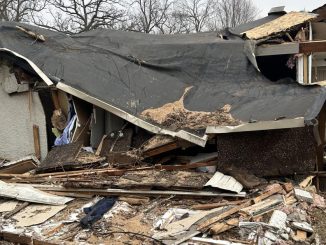An EF-2 tornado confirmed by the National Weather Service (NWS) tore through eastern North Dakota yesterday, leaving a tragic toll of 48 dead and thousands more without power. The storm caused widespread destruction across multiple communities, prompting emergency responses and urgent relief efforts across the region.
The tornado touched down in the late afternoon, packing winds estimated between 111 and 135 miles per hour, according to the NWS. It carved a destructive path across rural and suburban areas east of Fargo, including the towns of Hillsboro, Wahpeton, and Drayton. Entire neighborhoods were heavily damaged or destroyed, with homes leveled, vehicles overturned, and trees uprooted.
Heavy Loss of Life and Injuries
Local authorities confirmed the death toll of 48 victims, many of whom were caught in their homes when the storm struck. Hospitals in the affected counties reported hundreds of injuries, ranging from minor wounds to critical trauma. Medical personnel have been working tirelessly to treat the influx of patients, with additional healthcare teams deployed from surrounding states to assist.
Governor Heidi Heitkamp issued a statement expressing her sorrow over the devastating loss: “This is one of the darkest days in our state’s history. Our hearts go out to every family affected. We are committed to providing all necessary resources to support rescue and recovery.”
Widespread Damage and Power Outages
The tornado also caused massive infrastructure damage, leading to widespread power outages affecting over 20,000 residents. Utility crews are currently engaged in a massive restoration effort, but officials warn that full power recovery may take several days due to extensive damage to power lines, poles, and substations.
Roadways across the impacted region remain hazardous as debris and fallen trees block several key routes. Authorities have urged residents to stay off the roads unless absolutely necessary and to heed local advisories.
Meteorological Context and Warnings
The National Weather Service had issued tornado warnings for the region ahead of the storm, alerting residents to seek shelter immediately. Despite the warnings, the tornado’s rapid formation and erratic path made it difficult for some communities to adequately prepare.
“This tornado developed quickly and moved with great speed, which complicated response efforts,” said Sarah Jensen, a meteorologist with the NWS. “While warnings were issued, the intensity and swiftness of the storm left little time for some to react.”
Experts emphasize that this event underscores the ongoing risks posed by severe weather, particularly during the tornado season in the Upper Midwest.
Emergency Response and Community Aid
Emergency responders, including local police, fire departments, and the National Guard, have been deployed to assist in search and rescue operations. Shelters have been established in schools and community centers to house displaced residents, many of whom lost their homes.
The American Red Cross and numerous nonprofit organizations have mobilized to provide food, water, medical supplies, and other essentials to those affected. Community volunteers have also stepped forward in large numbers to aid cleanup and support families in distress.
Wahpeton Mayor Lisa Peterson highlighted the spirit of resilience in the wake of disaster: “Our community is heartbroken but determined. Together, we will rebuild and recover.”
Looking Forward
Officials warn that recovery will be a long and difficult process. Damage assessments, infrastructure repairs, and support for displaced families will continue for weeks, if not months.
Residents are encouraged to stay informed through official channels and comply with safety recommendations as additional storms are possible in the coming days.
The tragedy in eastern North Dakota is a sobering reminder of nature’s power and the importance of preparedness in the face of severe weather.


Be the first to comment